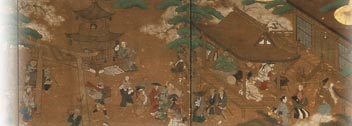International Conference on "Sangaku and Masks"
Outline
| date | December 7–9, 2007 |
|---|---|
| Venue | Waseda University (Okuma Auditorium) |
| Organizer | |
| outline | International Conference on "Sangaku and Masks" |
Details
This conference provided an opportunity for comparison of the history of mask theatre in Japan with mask theatre in China and the Korean peninsula, through presentations on the latest findings in the history of masks and the performing arts in these countries. There were also presentations on the history of the use of masks in Europe. Broadly, the main issue underlying the discussion was as follows: In Asia, at least, it is possible to make a broad classification of masks into two types: masks used for magical purposes, and masks used for performing arts. Masks used in performing arts emerged in the process of the development from masks for magical purposes to masks used in ritual (i.e., religious ceremonies). This does not necessarily prove a direct relationship between the development of ritual and the development of the performing arts, but most examples given in the conference point to this possibility. Exceptions also featured in the presentations; for example, cases of masks used in ritual not leading to the emergence of performing arts as pure entertainment; and cases where ritual masks have been found without the presence of any magical masks.The discussions can be summarized in the following issues, observations, and proposals for future directions in the field:
1) How does the principle of the division between masks used for magical purposes and masks used for performance fit with the development of masked performing arts in Japan, for example the use of masks in sarugaku? In the West, dramatic performances developed early, with masks already used in ancient Greek drama—quite unlike the situation in Asia. Even before the emergence of drama in ancient Greece there was the choros, or "circular [sung] dance", which featured masks. This kind of performance may possibly be of relevance for masked performing arts in Asia.
2) A look at the history of masks shows that they were involved in an extraordinary range of ancient performing arts. In ancient times, it seems to have been a convention for people to don masks whenever they put on a performance that involved the body in singing or dancing. The presentations on theatre in China made a convincing argument for the function of masks in effecting a magical transformation. Is this true also of masks in Europe? And did masks in the Japanese archipelago and the Korean peninsula, both influenced by China, acquire any functions of their own?
3) Studies of masks have all too often been regarded as one field within theatre studies, with the result that scant attention has been paid to their distinctive physical properties. We must explore more practically based considerations for our periodization of the history of the evolution of masks. Renewed effort should be put into fieldwork; for this, surveys and studies of masks on site are essential. The development of new methods in studies of masks is desirable. We should be open to participation of researchers from outside theatre studies, for example specialists in restoration of cultural property and researchers in Buddhist art. Much can also be gained from the use of new techniques: the use of montages of photographic images, for example, to analyze the expressions of masks. We should also construct a database of samples of masks.


